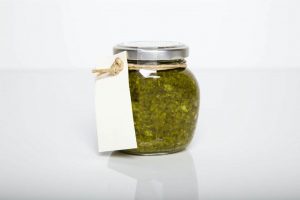What is the best Pickle Relish Substitute?
So you’re looking for a pickle relish substitute. Well, you’ve come to the right place. Let’s buckle up for a flavor-packed journey! Picture this: you’re all set to whip up your favorite dish, but, alas, no pickle relish in sight. Fear not! We’re about to unravel some alternatives that go beyond the usual suspects. Now, most articles might just list the alternatives, but we’re taking it up a notch. Let’s sprinkle in some information on how and when to use them.
Ever wondered about the versatility of green tomatoes or the zingy kick of capers? Well, we’ve got the lowdown on those and more. Trust me; you won’t find this info on your average food site.
We suggest using any of the following as an alternative for a relish substitute: Green Tomatoes, Capers, Green Olives, Chow Chow, Onion and Mustard Mix, Cornichons, Sauerkraut, or Cucumber and Dill Relish.
Give these relish substitutes a whirl in your recipes, and you can watch your dishes transform into culinary masterpieces! Remember, it’s all about experimenting and finding what tickles your taste buds.
What is Pickle Relish?
Pickle relish is like the unsung hero of condiments, adding a punch of flavor to various dishes. Essentially, it’s a condiment made from chopped pickles (usually cucumbers) that have been pickled in a brine solution. The brine is made up of various ingredients, but most contain vinegar, salt, sugar, and various spices. This can result in a delightful relish substitute of sweet, tangy, and savory goodness. While sweet pickle relish is more common, there’s also a savory version for those who prefer a bit less sweetness. You’ll often find pickle relish gracing hot dogs, burgers, sandwiches, and salads, adding a tasty and crunchy kick to the mix.
So what is the history of pickled relish? Where did pickled relish come from? Well, picture this: it all begins with the ancient art of pickling. Pickling, a method of preserving food in brine or vinegar, has been around for centuries, and it wasn’t long before someone had the brilliant idea to turn pickles into a delightful condiment.
The exact origin of pickled relish is a bit elusive, but it likely started making waves during the late 19th to early 20th centuries. As home canning and preserving then became popular, people began experimenting with ways to add that tangy, crunchy goodness of pickles to their dishes.
Now, the sweet and savory flavors in relish took a more structured form in the early 20th century, with recipes appearing in cookbooks and home economics guides. And as the commercial production of relish began to gain traction, it quickly became a staple in the United States. And now it is regularly found on the American dining table.
During the mid-20th century, relish found its perfect partner – the hot dog. The iconic pairing became a symbol of classic American cuisine, elevating the status of relish from a mere condiment to a culinary star in its own right.
Today, pickled relish comes in various forms, from the traditional sweet and dill versions to also some exciting gourmet variations with added ingredients like jalapeños or green tomatoes. It has definitely evolved into a versatile ingredient, lending its unique flavor to sandwiches, salads, and more.
So, there you have it – a brief stroll through the pickled history of relish. From ancient preservation techniques to gracing modern hot dogs, relish has truly stood the test of time, proving that good things often come in briny, flavorful packages! So, next time you’re in the condiment aisle, give pickle relish a nod – it might just become your secret weapon in the kitchen!
What can I substitute for Pickled Relish?
Here are some of the best ingredients to substitute the flavor and role that pickle relish provides in your recipes.
- Green Tomatoes
- Capers
- Green Olives
- Chow Chow
- Onion and Mustard Mix
- Cornichons
- Sauerkraut
Pickled Relish substitutes
Green Tomatoes
Green tomatoes are a fantastic choice as an substitute for pickle relish, and their unique flavor can bring a zesty twist to your dishes. You also aren’t stuck for alternatives as you can use green tomatoes to create so many other interesting dishes. Here are a few creative ways to incorporate green tomatoes into your recipes:
- Green Tomato Relish: Mimic the traditional relish by finely chopping green tomatoes and combining them with ingredients like onions, vinegar, sugar, and also some spices. Let the mixture marinate for a bit, and voila – you’ve got a homemade green tomato relish ready to elevate your hot dogs, burgers, or sandwiches.
- Salsa Verde: Blend chopped green tomatoes with onions, garlic, cilantro, lime juice, and also some jalapeño for a tangy and slightly spicy salsa verde. This sauce works well as a dip, topping for grilled meats, or even as a flavor booster in tacos.
- Green Tomato Chutney: Cook down some green tomatoes with a mix of brown sugar, vinegar, ginger, and spices to create a sweet and savory chutney. This chutney pairs beautifully with cheese, crackers, or even as a sidekick to roasted meats.
- Pickled Green Tomatoes: Take the pickling route by preserving green tomatoes in a brine solution with vinegar, salt, and spices. Let them soak up those flavors, and you’ll have a delightful, tangy pickle alternative. You can enjoy them as a side or you can also chop them up for relish-like goodness.
- Green Tomato Salsa: Dice green tomatoes and mix them with onions, cilantro, lime juice, and a dash of salt for a refreshing salsa. This vibrant salsa can be a flavorful topping for grilled fish, chicken, or a tasty addition to salads.
Remember, the key is to experiment and find the balance of flavors that suits your taste buds. Whether you’re exploring traditional relish-like creations or venturing into more foreign territory, green tomatoes can add a delightful twist to your culinary creations.
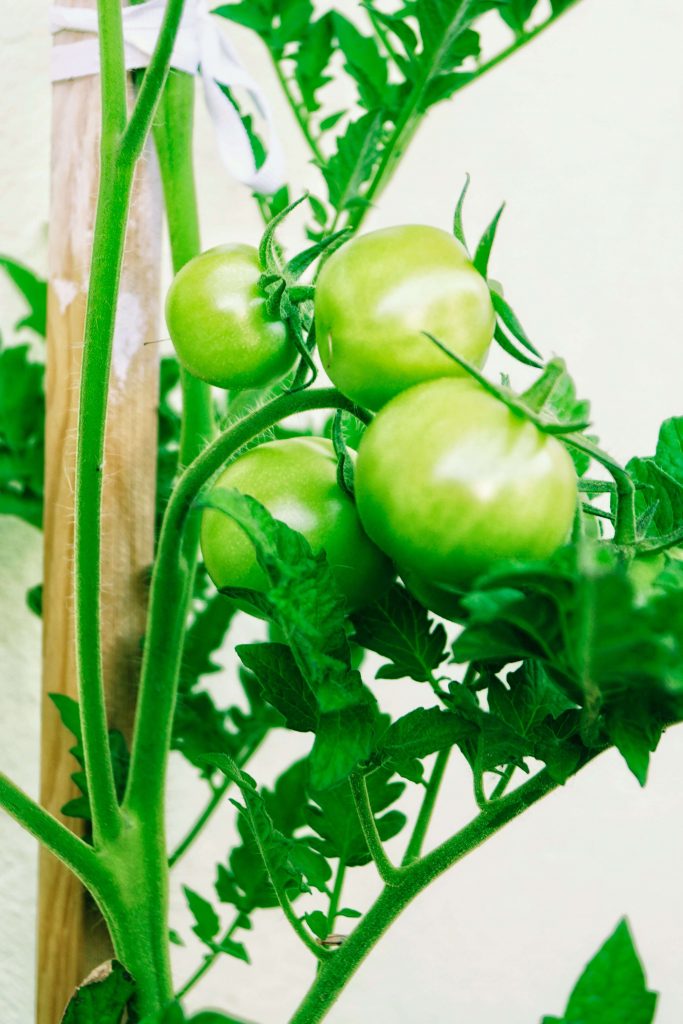
Capers as a pickle relish substitute
Capers are an excellent and a bit of an unconventional choice as a substitute for pickle relish, as they will bring a unique briny kick to your dishes. Like green tomatoes, they are an ingredient that can be used to create fantastic alternatives for pickled relish. Here are some creative ways to incorporate capers into your recipes:
- Caper Tartar Sauce: Upgrade your tartar sauce by mixing finely chopped capers with mayonnaise, chopped pickles, a squeeze of lemon juice, and also a dash of Dijon mustard. This zesty tartar sauce is perfect for fish dishes, seafood, or as a dipping sauce for fries.
- Caper and Olive Tapenade: Combine capers with green and black olives, garlic, and also a splash of olive oil to create a flavorful tapenade. Spread it on crostini, use it as a sandwich spread, or you can even pair it with crackers for a tasty appetizer.
- Caper Relish for Hot Dogs or Burgers: Chop up some capers and mix them with diced red onions, a bit of mustard, and also a touch of honey. This caper relish adds a briny, savory dimension to your hot dogs or burgers, giving them a gourmet twist.
- Caper Pasta Salad: Toss capers into your favorite pasta salad along with cherry tomatoes, feta cheese, olives, and a light vinaigrette. The capers will bring a burst of flavor, transforming your salad into a Mediterranean delight.
- Caper and Lemon Butter Sauce: Create a delicious sauce by sautéing capers in butter with a splash of lemon juice. This simple yet tasty sauce pairs well with grilled fish or chicken, adding a bright and tangy element.
- Caper and Herb Dressing: Blend capers with fresh herbs, garlic, olive oil, and a touch of red wine vinegar to make a vibrant dressing. Drizzle it over salads, roasted vegetables, or grilled meats for a burst of flavor.
Capers may be small, but their bold flavor can make a big impact in your dishes, offering a delightful alternative to traditional pickle relish.
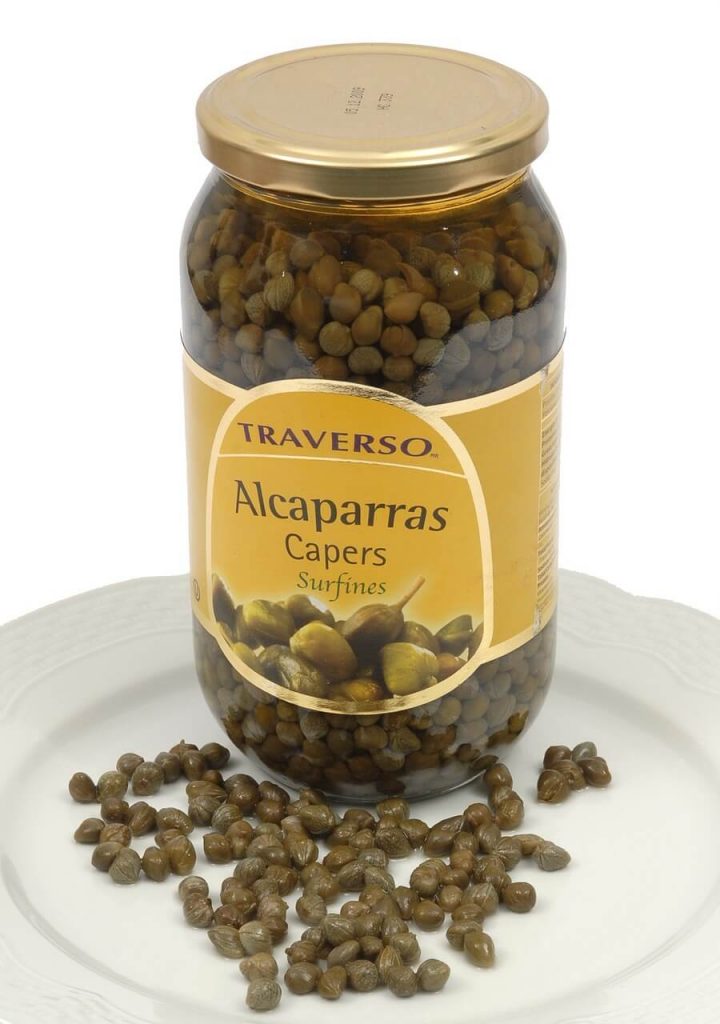
Green Olives as a pickle relish substitute
Green olives can bring a distinct briny and savory flavor to your dishes, making them a unique alteernative for pickle relish. Here are some ways to incorporate green olives into your recipes:
- Olive Tapenade Relish: Create a relish-like mixture by finely chopping green olives and mixing them with diced red onions, capers, and also a splash of olive oil. This Mediterranean-inspired relish is perfect for sandwiches, wraps, or even as a topping for grilled chicken or fish.
- Green Olive Salsa: Dice green olives and mix them with tomatoes, red onions, cilantro, and lime juice for a refreshing salsa. This zesty salsa can be a used on tacos, grilled meats, or served as a dip with tortilla chips.
- Olive and Feta Spread: Blend green olives with feta cheese, garlic, and a drizzle of olive oil to create a flavorful spread. Use it as a sandwich filling, a dip for veggies, or a topping for crackers for a quick and tasty appetizer.
- Green Olive Relish for Burgers: Chop green olives and mix them with some minced garlic, parsley, and also a squeeze of lemon juice. This olive relish works wonders as a topping for burgers, giving them a savory and briny kick.
- Olive and Herb Quinoa Salad: Toss chopped green olives into a quinoa salad along with cherry tomatoes, cucumber, feta cheese, and some fresh herbs. The olives will add a burst of flavor, turning your salad into a Mediterranean-inspired delight.
- Green Olive Aioli: Mix chopped green olives into a classic aioli made with mayonnaise, garlic, and lemon juice. You can use this tasty aioli on sandwiches, burgers, or you can also serve it on the side as a dipping sauce for fries.
Green olives offer a unique and robust flavor profile that can add a delicious twist to your dishes, providing a fresh take on the traditional pickle relish.
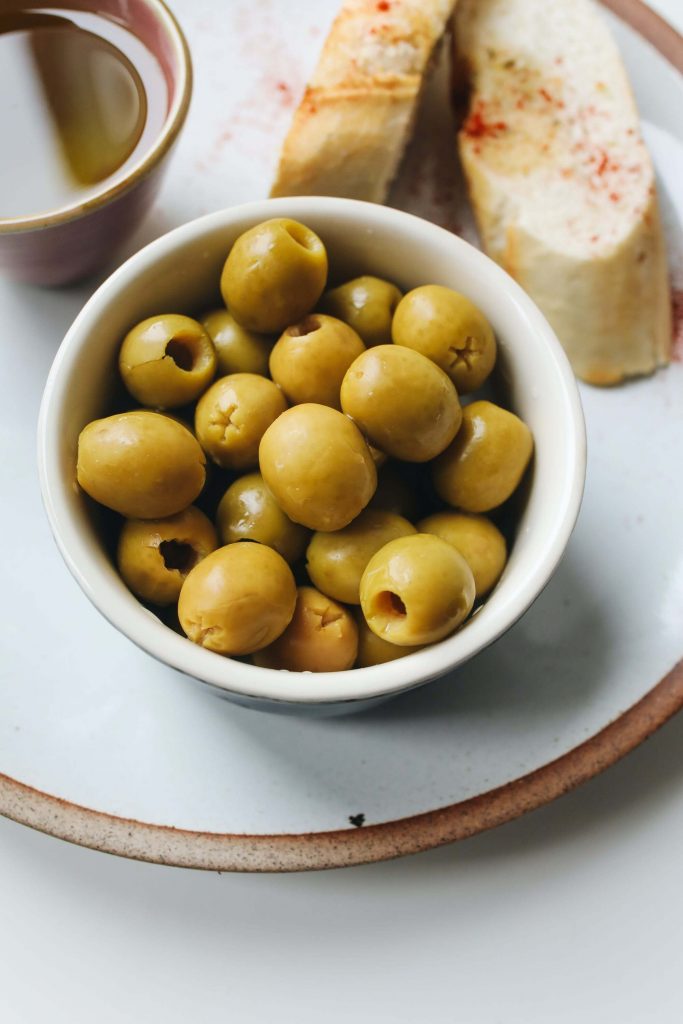
Chow Chow as a pickle relish substitute
Chow chow is a delightful Southern condiment that adds a burst of flavor to a variety of dishes. It’s essentially a pickled relish made from a medley of vegetables, commonly including green tomatoes, cabbage, bell peppers, onions, and sometimes cucumbers. The vegetables are finely chopped and pickled in a tangy brine, resulting in a sweet and savory condiment with a hint of spiciness.
Now, let’s explore how you can use chow chow as an pickle relish substitute:
- Hot Dog and Burger Topper: Spoon chow chow onto hot dogs or burgers for a flavorful and crunchy topping. The combination of pickled veggies will add a Southern twist to your classic grill favorites.
- Sandwich Spread: Spread chow chow on sandwiches or wraps to enhance their flavor. It works particularly well with grilled chicken, turkey, or ham, giving your sandwich a unique and tangy kick.
- Potato Salad Upgrade: Mix chow chow into your potato salad for an extra layer of flavor and texture. The pickled veggies will complement the creamy potatoes – just perfect as a delicious side dish.
- Relish Substitute in Recipes: Use chow chow as a pickle relish substitute in recipes that call for it. Whether you’re making chicken salad, tuna salad, or a dip, chow chow can bring a distinctive flavor to the mix.
- Grilled Meats Accompaniment: Serve chow chow alongside grilled meats, such as sausages or pork chops. The acidity and crunchiness of the pickled veggies can cut through the richness of the meat.
- Cheese and Charcuterie Board Addition: Include chow chow on a cheese and charcuterie board for a burst of flavor. Its pickled goodness pairs well with various cheeses and cured meats.
The unique combination of flavors in Chow Chow make it an extremely versatile condiment that can add a Southern flair to a wide range of dishes.
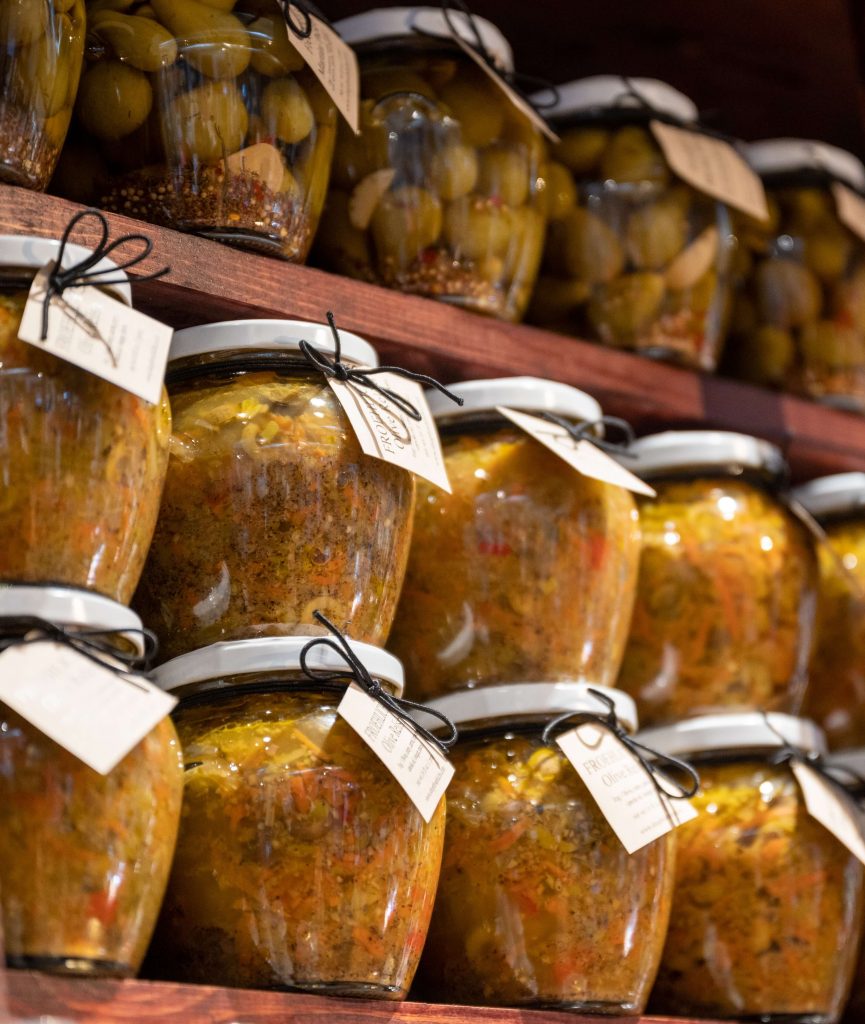
Onion and Mustard Mix
Onion and mustard make for a dynamic duo that can serve as a tasty pickle relish substitute. Here are some creative ways to use this combination in your recipes:
- Onion and Mustard Relish for Hot Dogs: Finely chop onions and then mix them with mustard to create a relish-like topping for hot dogs. This zesty and savory blend will add a burst of flavor to your grilled franks.
- Onion and Mustard Aioli: Combine finely minced onions with Dijon mustard and mix it well into mayonnaise to create a delicious aioli. This sauce can then be used as a sandwich spread, burger topping, or even as a dipping sauce for fries.
- Mustard Onion Potato Salad: Incorporate chopped onions and mustard into your potato salad for a tangy twist. The combination of the two adds depth and a subtle kick to the creamy potatoes.
- Onion and Mustard Marinade for Grilled Meats: Create a marinade by mixing finely chopped onions with mustard, garlic, and olive oil. Use it to marinate chicken, pork, or beef before grilling for a flavorful and aromatic result.
- Onion and Mustard Sandwich Filling: Blend diced onions with mustard and use the mixture as a filling for sandwiches. It works particularly well with deli meats like ham or turkey, adding a zesty punch to your lunch.
- Mustard Onion Pickle Dip: Combine minced onions with mustard and finely chopped pickles to create a tangy and savory dip. This dip works really well with pretzels, chips, or even fresh vegetable sticks.
The sharpness of the onions combined with the tangy kick of mustard creates a versatile flavor profile that can enhance various dishes.
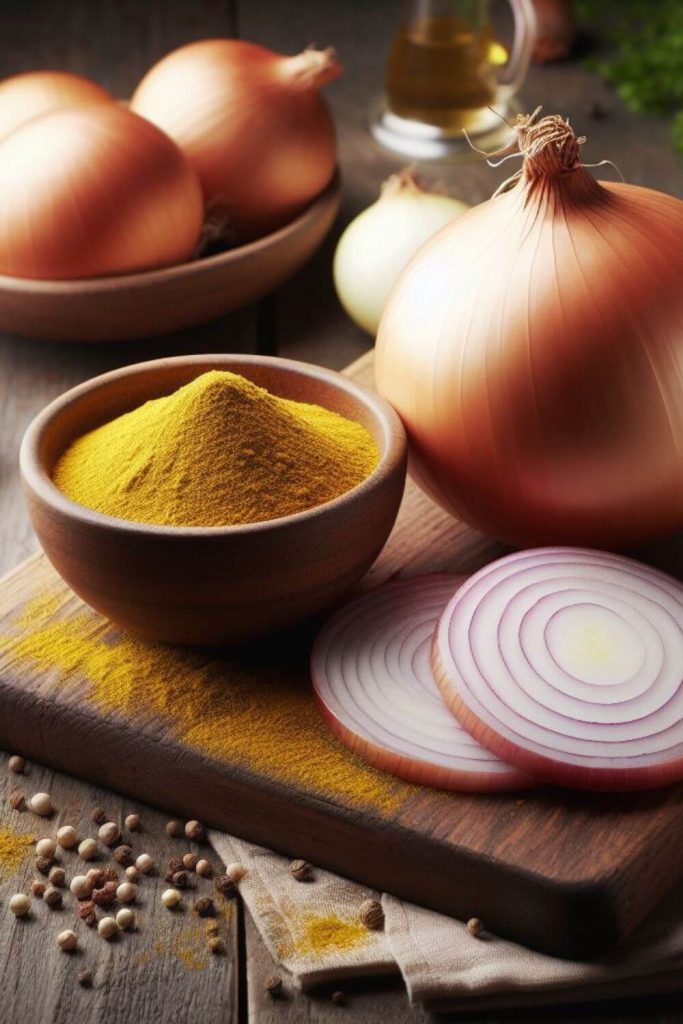
Cornichons as a pickle relish substitute
Cornichons are small, crisp, tart pickles made from tiny gherkin cucumbers. They’re a classic component of French cuisine, and are often enjoyed as a condiment or accompaniment to dishes. So let’s explore how you can use cornichons as a unique and flavorful alternative to pickle relish:
- Cornichon Relish for Hot Dogs and Burgers: Chop cornichons finely and mix them with a bit of Dijon mustard and also minced shallots or red onions. This combination creates a tangy and crunchy relish that works wonderfully on hot dogs, burgers, or even grilled sausages.
- Cornichon Tartar Sauce: Add chopped cornichons to your tartar sauce mixture. Combine them with mayonnaise, minced capers, fresh herbs, and a squeeze of lemon juice for a zesty and rather sophisticated tartar sauce that pairs really well with fish and seafood.
- Cornichon Potato Salad: Toss chopped cornichons into your potato salad along with the usual ingredients like potatoes, mayonnaise, and mustard.
- Cornichon and Cheese Board Addition: Include whole or sliced cornichons on a cheese and charcuterie board. Their tangy flavor complements various cheeses and cured meats, providing a palate-cleansing element.
- Cornichon Vinaigrette: Blend chopped cornichons into a vinaigrette with olive oil, Dijon mustard, and also a splash of red wine vinegar. This dressing can then be drizzled over salads or used as a marinade for grilled vegetables.
- Cornichon Tapenade: Pulse cornichons in a food processor with olives, garlic, and olive oil to create a savory tapenade. Spread it on crostini, use it as a dip, or incorporate it into sandwiches for an elegant twist.
Cornichons bring a unique flavor and texture to the table, adding a touch of sophistication to your dishes. Whether you’re aiming for a classic French vibe or looking to explore new culinary dimensions, cornichons can be a delightful alternative to traditional pickle relish.
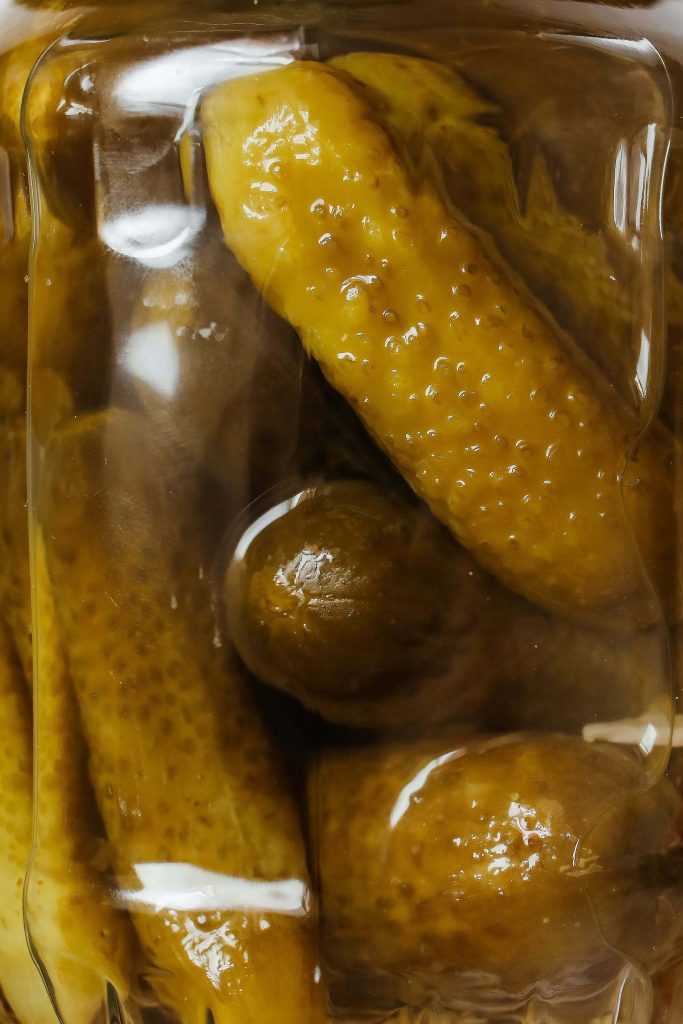
Sauerkraut as a pickle relish substitute
Sauerkraut, with its tangy and fermented goodness, can be a fantastic alternative to pickle relish. Here are some creative ways to incorporate sauerkraut into your dishes:
- Sauerkraut Relish for Hot Dogs and Sausages: Finely chop sauerkraut and mix it thoroughly with mustard to create a unique relish. This combination adds a distinctive tang to hot dogs and sausages, giving them a deliciously fermented twist.
- Reuben Sandwich Upgrade: Use sauerkraut as a replacement for pickle relish in a classic Reuben sandwich. Layer it with corned beef, Swiss cheese, and Russian dressing for a flavorful and satisfying sandwich.
- Sauerkraut Potato Salad: Toss sauerkraut into your potato salad for a tangy kick. The fermented cabbage pairs really well with the creaminess of the potatoes, creating a delicious and unexpected flavor combination.
- Sauerkraut Coleslaw: Combine sauerkraut with shredded cabbage, carrots, and a tangy dressing for a unique coleslaw. This variation adds a fermented twist to the traditional coleslaw, making it a refreshing side dish.
- Sauerkraut and Mustard Dip: Mix sauerkraut with Dijon mustard and also a touch of mayonnaise for a flavorful dip. It’s perfect for pretzels, chips, or even as a condiment for grilled meats.
- Sauerkraut Bratwurst Topping: Serve sauerkraut as a topping for bratwurst or even on grilled sausages. The fermented cabbage provides a burst of flavor that complements the savory meat beautifully.
- Sauerkraut and Swiss Cheese Quesadillas: Create a fusion dish by adding sauerkraut and Swiss cheese to your quesadillas. The combination of tangy sauerkraut and melty cheese is sure to be a hit.
Sauerkraut’s unique taste can add depth and complexity to your dishes, offering a distinct alternative to traditional pickle relish.
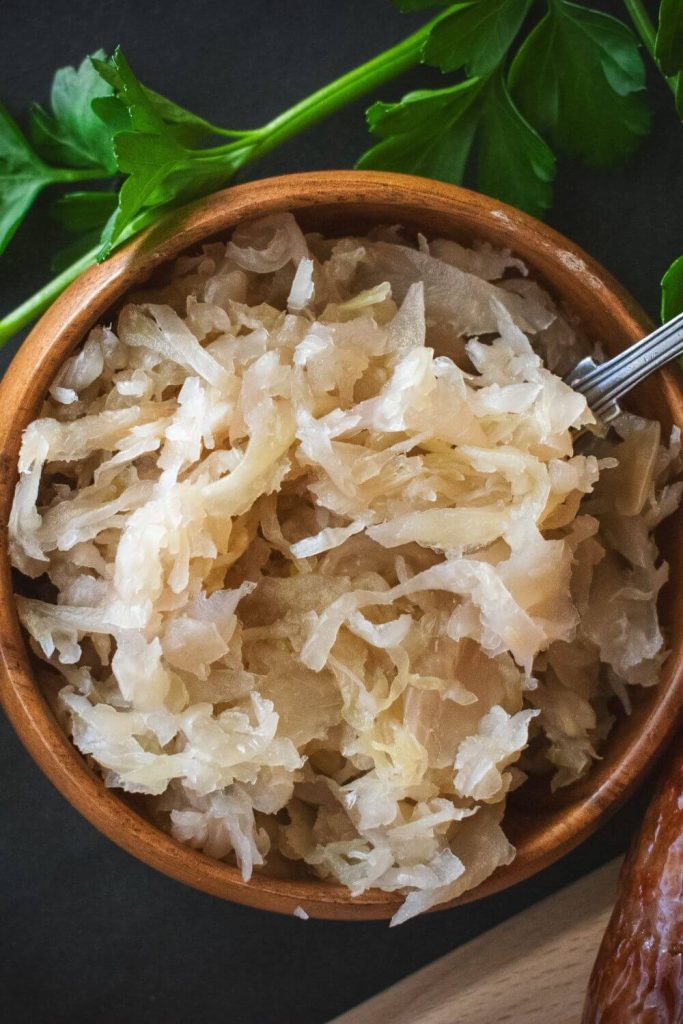
Cucumber and Dill Relish
Using cucumber with dill as an alternative for pickle relish is a great choice. Here are some creative ways to incorporate cucumber and dill relish into your dishes:
- Hot Dogs and Burgers: Spoon the cucumber and dill relish onto hot dogs or burgers for a cool and crisp topping. The combination of cucumber’s freshness and dill’s herbaceous notes will add a delightful twist to your grilled favorites.
- Sandwich Spread: Mix the cucumber and dill relish with a bit of mayonnaise or Greek yogurt to create a light spread for sandwiches or wraps. It works particularly well with chicken or turkey sandwiches.
- Grilled Chicken Topping: Use the relish as a topping for grilled chicken breasts or thighs. The coolness of cucumber complements the savory grilled chicken, creating a well-balanced and tasty dish.
- Salads: Fold the cucumber and dill relish into green salads or potato salads. Its crisp texture and refreshing taste can elevate your salads to a new level.
- Seafood Garnish: Pair the relish with seafood dishes. Whether it’s grilled fish, shrimp tacos, or a seafood salad, the cucumber and dill combination brings a burst of freshness that complements the flavors of the sea.
- Dip Enhancer: Mix the cucumber and dill relish into sour cream or Greek yogurt to create a quick dip. It’s perfect for vegetable sticks, pita chips, or you can also use it as a refreshing accompaniment to grilled meats.
- Garnish for Cold Soups: Or why not add a spoonful of cucumber and dill relish as a garnish for cold soups like gazpacho? The cool crunchiness adds a refreshing element to the chilled soup.
Remember to adjust the quantities and seasoning based on your taste preferences. The cucumber and dill combination brings a light and summery vibe to your dishes, making it a versatile alternative to traditional pickle relish.
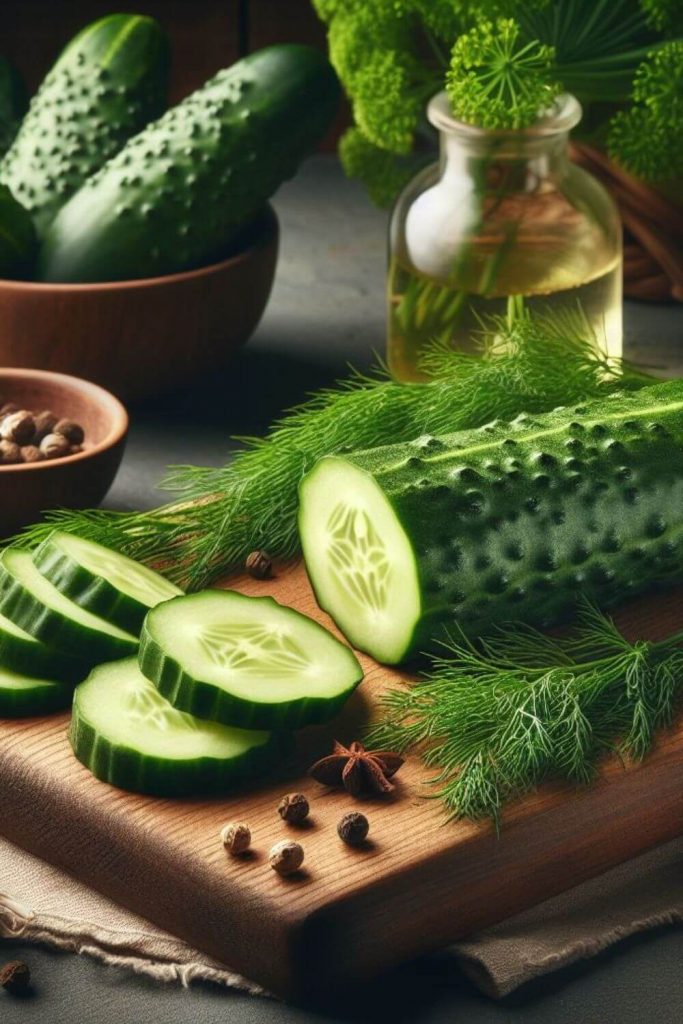
Do you want to make your own Pickled Relish?
Making your own pickled relish has several benefits. Firstly, you have complete control over the ingredients, allowing you to customize the flavors to suit your taste preferences. Additionally, homemade pickled relish often lacks the preservatives and additives found in some commercial varieties, making it a healthier option. There are many different types of pickle relish and here are a few reasons why you might consider making your own pickled relish:
- Tailored Flavor: You can adjust the sweetness, tanginess, and spiciness of the relish to match your liking. Always experiment with different herbs and spices to create a unique flavor profile that suits your culinary preferences.
- Freshness: Homemade relish allows you to use fresh, quality ingredients. This freshness can translate to a more vibrant and flavorful end product compared to store-bought options.
- Customizable Ingredients: You can choose organic or locally sourced cucumbers and other vegetables, ensuring a higher quality and potentially reducing your environmental footprint.
- No Artificial Additives: Many store-bought relishes may contain artificial colors, flavors, and also preservatives. By making your own, you have the assurance of using natural ingredients without unwanted additives.
- Fun and Rewarding: Making pickled relish at home can be a fun and rewarding culinary project. It allows you to engage with the process of pickling and alows you to “relish” the satisfaction of enjoying something you made yourself.
If you’re up for it, I’d say go for it! There are plenty of simple and quick pickled relish recipes available. Whether you’re looking for a classic dill relish or something with a unique twist, making your own gives you the freedom to explore different flavors and enjoy a homemade relish.
So here’s a couple of quick and easy recipes that we love, which will allow you to make your own homemade relish.
Homemade Pickled Relish
Making pickled relish at home is easy and allows you to customize the flavors to your liking. Here’s a quick and simple recipe that you can make in advance:
Ingredients:
- 1 cup finely chopped cucumbers
- 1/2 cup finely chopped onions
- 1/4 cup finely chopped red bell pepper
- 1/4 cup finely chopped green bell pepper
- 1/2 cup white vinegar
- 1/4 cup granulated sugar
- 1 teaspoon salt
- 1/2 teaspoon mustard seeds
- 1/4 teaspoon celery seeds
Instructions:
- In a bowl, combine the chopped cucumbers, onions, red bell pepper, and finally the green bell pepper.
- In a small saucepan, heat the white vinegar, sugar, salt, mustard seeds, and celery seeds over medium heat. Stir until the sugar and salt dissolve, and the mixture comes to a gentle boil.
- Pour the hot vinegar mixture over the chopped vegetables. Stir well to combine.
- Allow the mixture to cool to room temperature. Once cooled, transfer it to a clean, airtight jar.
- Cover the jar and refrigerate the relish for at least a few hours or overnight. This allows the flavors to meld and intensify.
- Your quick homemade pickled relish is ready to use! It’s great on hot dogs, burgers, sandwiches, and also as a flavorful addition to salads.
Homemade Cucumber & Dill Relish
This quick and fresh relish adds a crisp texture and a burst of dill-infused flavor to your dishes. It’s a great way to enjoy the bright and summery essence of cucumber with the herby notes of dill.
Ingredients:
- 1 medium cucumber, finely diced
- 1 tablespoon fresh dill, chopped
- 1 tablespoon white vinegar
- 1 teaspoon sugar
- 1/2 teaspoon salt
- A pinch of black pepper
Instructions:
- In a bowl, combine the finely diced cucumber and chopped fresh dill.
- In a separate small bowl, whisk together the white vinegar, sugar, salt, and black pepper until the sugar and salt are dissolved.
- Pour the vinegar mixture over the cucumber and dill. Toss everything together until the cucumber is well coated.
- Allow the relish to marinate in the refrigerator for at least 30 minutes to an hour. This gives the flavors time to meld.
- Give it a taste and adjust the seasoning if needed.
- Serve your cucumber and dill relish on hot dogs, burgers and sandwiches, or even as a flavorful topping for grilled fish or chicken.
FAQs for Pickled Relish Substitutes
Is pickle relish not just chopped up pickles?
Well, yes, pickle relish is essentially chopped or finely diced pickles that have then been pickled in a brine solution. The brine typically consists of vinegar, water, salt, sugar, and also various spices, giving the pickles their distinct flavor. The chopped pickles in relish can be made from cucumbers or other vegetables like green tomatoes.
Pickle relish is often served as a popular condiment, adding a sweet, tangy, and crunchy element to various dishes. While the term “pickle relish” often refers to pickled cucumbers, there are also other variations that include relishes made from other pickled vegetables.
So, in a nutshell, pickle relish is more than just chopped pickles – it’s pickles that have been transformed into a flavorful condiment through the pickling process.
If I don’t have dill pickle relish can I use sweet pickle relish instead?
Yes, you can use sweet pickle relish as a substitute for dill pickle relish in many recipes. However, it’s essential to keep in mind that sweet pickle relish has a different flavor profile compared to dill pickle relish.
Dill pickle relish has a tangy and savory flavor with the distinctive taste of dill. On the other hand, sweet pickle relish is, as the name suggests, sweet and has a milder, less tangy flavor. It typically contains sugar, giving it a sweeter taste that might not be present in dill pickle relish.
If the recipe you’re working on can accommodate the sweetness, feel free to use sweet pickle relish as a substitute. However, remember the potential impact on the overall flavor of the dish. It’s always a good idea to taste and adjust as needed based on your preferences.
In some cases, you might want to balance the sweetness by adding a touch of vinegar or lemon juice to mimic the tangy notes found in dill pickle relish. Ultimately, the choice between sweet and dill pickle relish depends on your taste preferences and the specific flavor you’re aiming for in your dish.
What non-pickle substitutes are there for pickle relish?
Don’t like the flavor of pickles? Don’t worry. While there’s no perfect one-to-one substitute for the unique flavor and texture of pickle relish, you can always try experimenting with various non-pickle alternatives depending on the dish you’re preparing. Here are some creative options that you coud try:
- Green Olives: Chopped green olives offer a briny and slightly sweet flavor. They can add a unique twist to dishes where pickle relish is typically used.
- Cucumber and Dill Relish: Finely chopped cucumber combined with fresh dill can create a crisp and herby alternative. You can add a splash of vinegar or lemon juice for a hint of acidity. (check out the recipe above)
- Celery: Chopped celery provides a crunchy texture and a mild, fresh flavor. While it lacks the pickled tang, it can work well in salads and sandwiches.
- Tomato Salsa: Fresh tomato salsa with onions, cilantro, and lime juice can bring a burst of flavor. It won’t have the same texture, but it adds a lively touch to dishes.
- Roasted Red Pepper Relish: Finely chop roasted red peppers and mix them with onions, vinegar, and herbs for a sweet and tangy relish-like alternative.
Remember, the key is to consider the overall flavor of the dish and play around with ingredients that complement the other components. While these alternatives might not replicate pickle relish exactly, they can provide interesting and delicious variations in your recipes.
Summary for Pickled Relish substitutes
Okay – that’s you all sorted with suitable substitutes for pickled relish.
Here’s a quick recap:
- Green Tomatoes: Unripe tomatoes bring a tangy twist, adding a vibrant pop to your dishes. They’re like the rebellious siblings of the ripe, red tomatoes, bringing a unique flavor to the table.
- Capers: These little flavor bombs are often overshadowed by their pickled companions, but don’t underestimate them. Capers offer a salty, and also a briny kick, perfect for adding a gourmet touch to salads, dressings, or even fish dishes.
- Green Olives: Green olives can bring both a distinct briny and a savory flavor to your dishes. This makes them a great alternative for pickle relish.
- Chow Chow: Hailing from the Southern culinary tradition, this pickled medley of veggies is a hidden gem. It’s a delightful mix of cabbage, peppers, and onions, adding a sweet and tangy kick to your recipes.
- Onion and Mustard Mix: Combine finely chopped onions with a dollop of mustard for a quick fix. This dynamic duo provides a zesty, pungent flavor that works wonders in sandwiches and also hot dogs.
- Cornichons: These tiny French pickles are a gourmet delight. Bursting with flavor, they bring a crisp texture and a hint of sweetness, making them a fantastic alternative to traditional relish.
- Sauerkraut: Sauerkraut’s unique fermented flavor offers a distinct alternative to traditional pickle relish.
- Cucumbers with Dill: When cucumber and dill are combined they add a light, summery flavor to your dishes.
Give these substitutes a whirl in your recipes, and watch your dishes transform into culinary masterpieces! Remember, it’s all about experimenting and finding what tickles your taste buds. Happy cooking!
We have gathered together a lot more facts on ingredients such as herbs, spices, oils, nuts, etc. if you would like to learn some more.
Or if you need to swap out another ingredient have a look at our Substitutes section.
